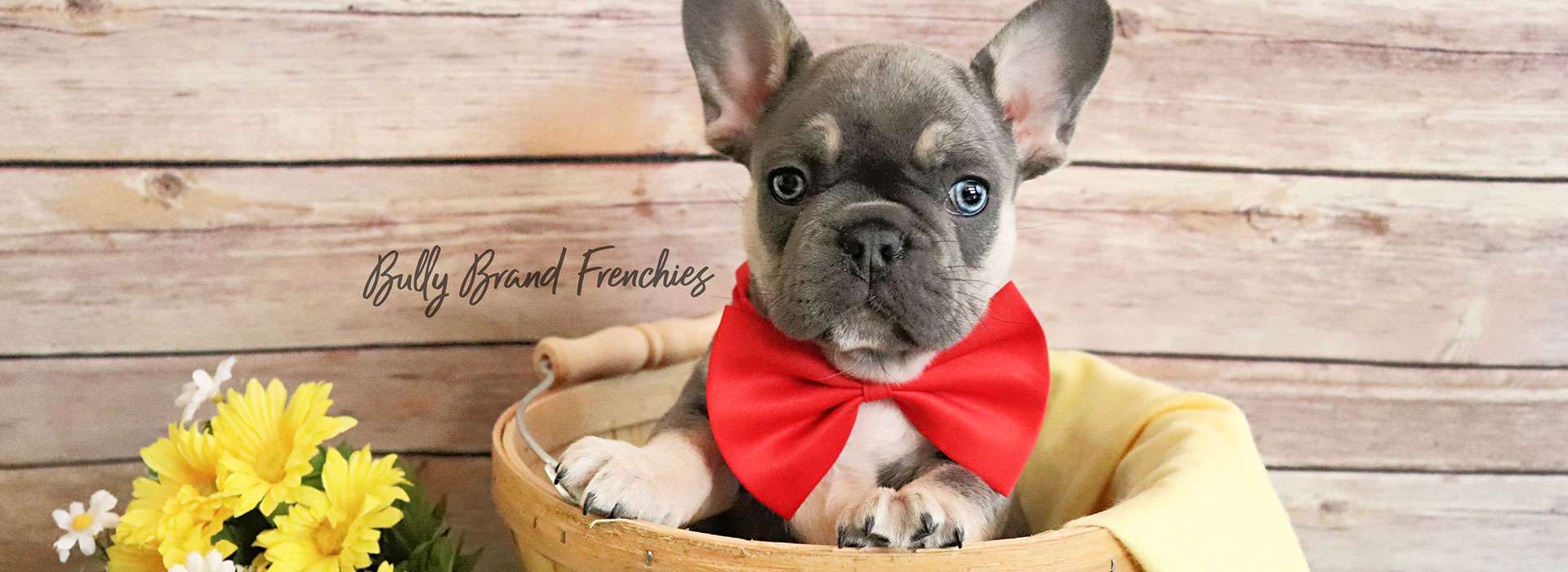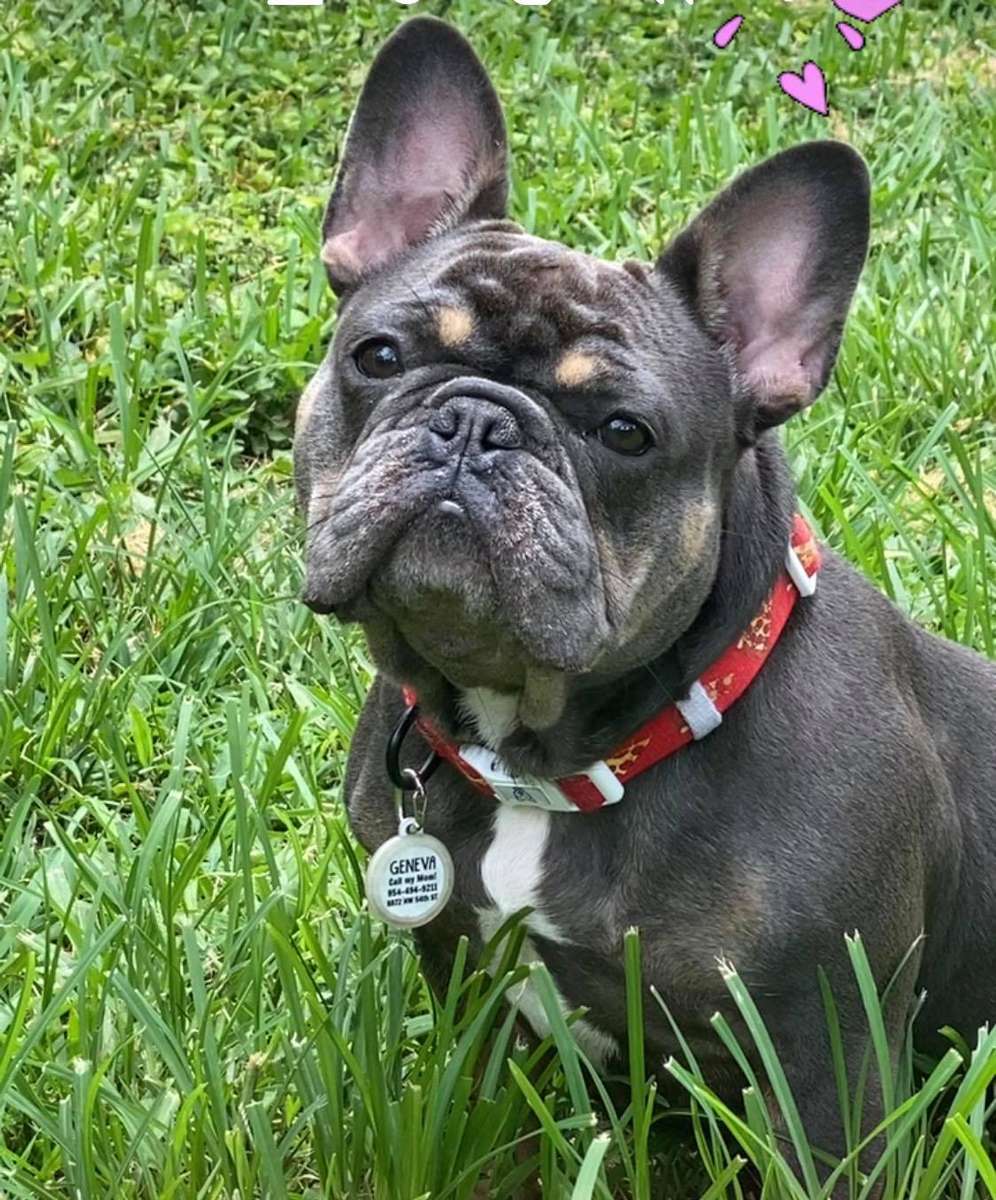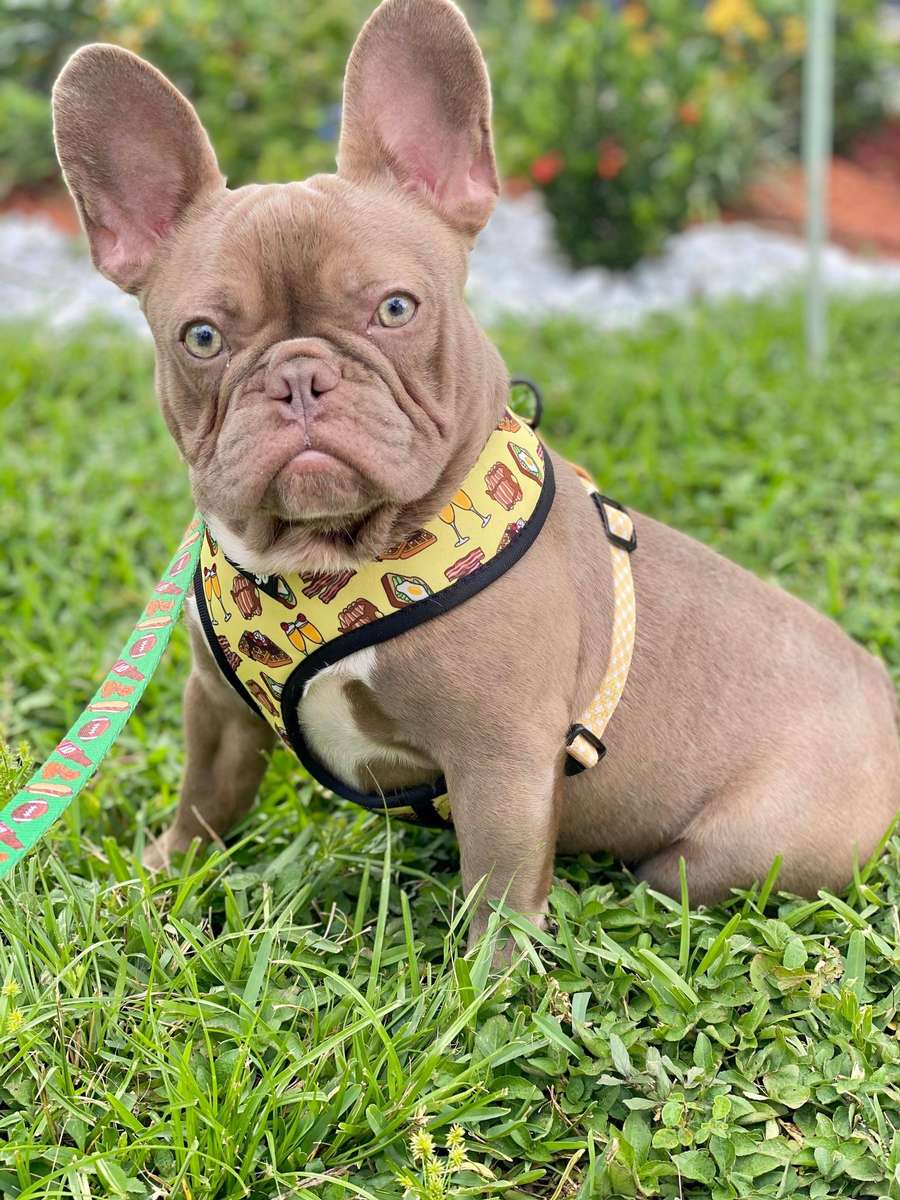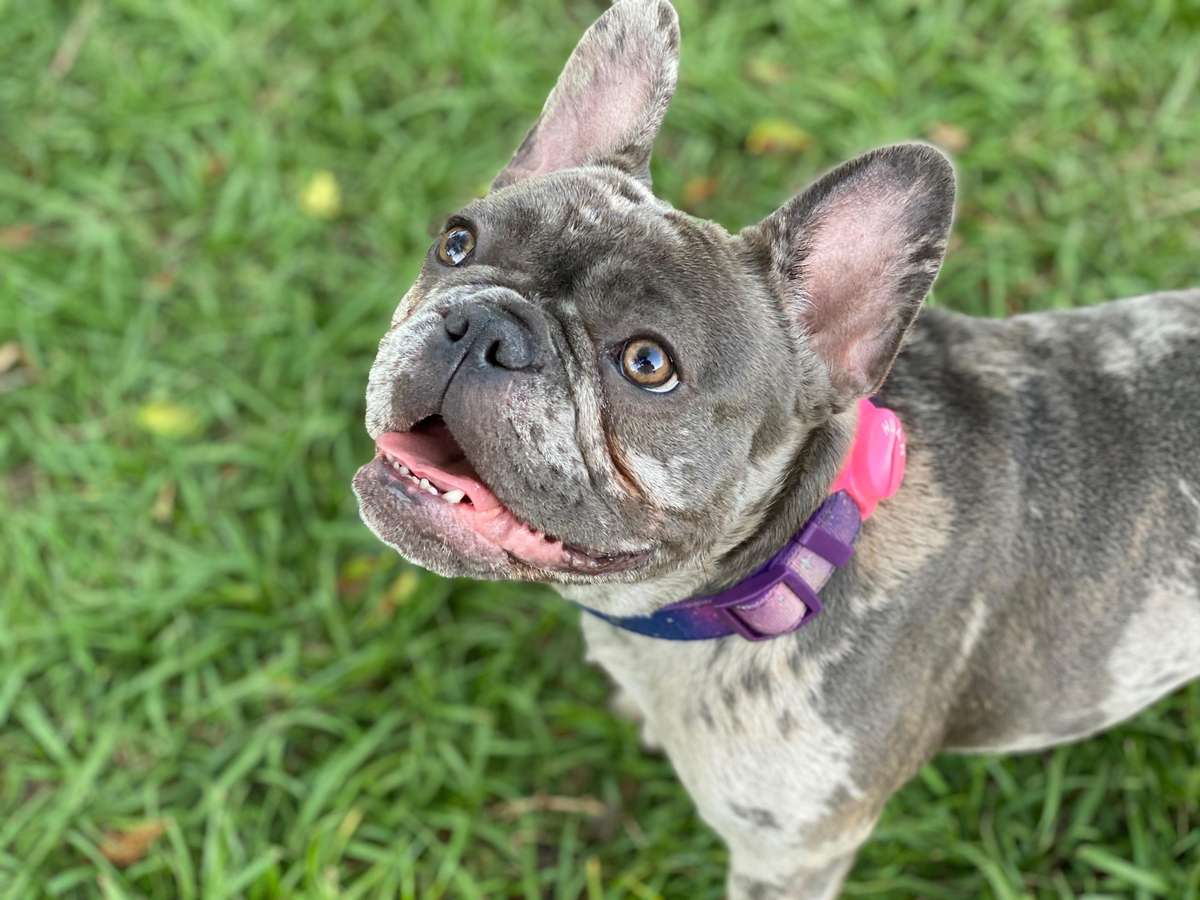
Frenchie Facts / Breed Standards
History of the French Bulldog
According to history, lace-makers in 19th Century Nottingham, England selectively bred the early bulldog for a downsized or “toy” bulldog for use as a lap pet. When the Industrial Revolution displaced some of these lace-makers to France, they took some of these fun little dogs with them, and soon the toy bulldogs became very popular in France, hence their name the “French Bulldog”.
These unusual and wonderful little dogs also caught the eyes of many wealthy Americans, who were doing the Grand Tour, so much so that many of these tourists brought a dog or two home with them. It was in America that selective breeding was done for the characteristic bat-ears. At this time in Europe, both bat-ears and rose-ears were prevalent. (We’re not really sure what rose ears looked like – probably similar to the current English Bulldog’s floppy ears. We’re just glad the bat-ears became the standard because we think this is one of their most endearing features.)
After they were brought back to America, they continued to be known as the French Bulldog, even though the original breed was developed in England and much of the selective breeding was done in America.

General Appearance
The French Bulldog has the appearance of an active, intelligent, muscular dog of heavy bone, smooth coat, compactly built, and of medium or small structure. Expression alert, curious, and interested. Any alteration other than the removal of dewclaws is considered mutilation and is a disqualification.
Proportion & Symmetry
All points are well distributed and bear good relation one to the other; no feature being in such prominence from either excess or lack of quality that the animal appears poorly proportioned.
Size, Proportion, Substance
Adult French bulldogs average 12 to 14 inches in height and weigh between 19 to 30 pounds.
Proportion – Distance from withers to ground in good relation to distance from withers to onset of tail, so that animal appears compact, well balanced, and in good proportion.
Substance – Muscular, heavy bone.
Head
- Head large and square.
- Eyes dark in color, wide apart, set low down in the skull, as far from the ears as possible, round in form, of moderate size, neither sunken nor bulging. In lighter-colored dogs, lighter-colored eyes are acceptable. No haw and no white of the eye showing when looking forward.
- Ears are known as the bat ear, broad at the base, elongated, with a round top, set high on the head but not too close together, and carried erect with the orifice to the front. The leather of the ear is fine and soft. Other than bat ears is a disqualification.
- The top of the skull is flat between the ears; the forehead is not flat but slightly rounded.
- The muzzle is broad, deep, and well laid back; the muscles of the cheeks well developed. The stop is well-defined, causing a hollow groove between the eyes with heavy wrinkles forming a soft roll over the extremely short nose; nostrils broad with a well-defined line between them.
- Nose black. A nose other than black is a disqualification, except in the case of the lighter colored dogs, where a lighter colored nose is acceptable but not desirable. Flews black, thick and broad, hanging over the lower jaw at the sides, meeting the underlip in front and covering the teeth, which are not seen when the mouth is closed.
- The underjaw is deep, square, broad, undershot, and well turned up.
Neck, Topline, Body
- The neck is thick and well arched with loose skin at the throat.
- The back is a roach back with a slight fall close behind the shoulders; strong and short, broad at the shoulders and narrowing at the loins.
- The body is short and well-rounded.
- The chest is broad, deep, and full; well ribbed with the belly tucked up.
- The tail is either straight or screwed (but not curly), short, hung low, thick root, and fine tip; carried low in repose.
Forequarters
- Forelegs are short, stout, straight, muscular, and set wide apart. Dewclaws may be removed.
- Feet are moderate in size, compact, and firmly set. Toes compact, well split up, with high knuckles and short stubby nails.
Hindquarters
Hind legs are strong and muscular, longer than the forelegs, so as to elevate the loins above the shoulders. Hocks well let down. Feet are moderate in size, compact, and firmly set. Toes compact, well split up, with high knuckles and short stubby nails; hind feet slightly longer than forefeet.
Coat
The coat is moderately fine, brilliant, short, and smooth. Skin is soft and loose, especially at the head and shoulders, forming wrinkles.
Color
Frenchies come in a rainbow of colors. There are standard colors & exotic colors all colors are recognized by the AKC, but only standard colors may compete in AKC dog shows.
Gait
Correct gait is double tracking with reach and drive; the action is unrestrained, free, and vigorous.

What is the Temperament of a Frenchie?
The French bulldog is a very loving dog, he is playful, affectionate, and likes attention from all those he comes in contact with. A Frenchie needs constant companionship from his family, so he would not do well left alone in a backyard. He makes an excellent companion for children, although very small children may not tolerate his over-enthusiastic nature. He generally gets along well with other animals as long as they are as playful as he is.
They generally are not excessive barkers, They will protect their home and alert owners to intruders as well as when people are at the door. They do not sound vicious but do have a deep bark. They are often referred to as "little clowns" and this description could not be true! The Frenchie is at his utmost content when he is showered with affection and will return the favor to his utmost capabilities. He is a true lapdog, an extreme lover, a bodyguard, a playful companion, and is a true "best friend". Just as with people, dogs do differ, and while the above is relatively a true picture of the average breed of the French bulldog the Frenchie can vary. Some are more boisterous than others, but almost all French bulldogs have the loyalty and love for their owners which make them excellent companions.
Life Span of a Frenchie
The average life span of a French Bulldog is approximately 9 to 14 years of age.

Health Concerns
Frenchies also tend to be a fairly healthy breed. Because they are a short-faced (“brachycephalic”) and dwarf (“chondrodystrophic”) breed, they have some health concerns every owner should be aware of. Their short face makes their breathing less efficient, so Frenchies have less tolerance to heat, exercise, and stress. Like other dwarf breeds, the stocky Frenchie occasionally has abnormal vertebrae. Because of the good musculature, problems generally do not occur, especially if they use of stairs and jumping is limited. This small/medium size dog does not have the knee joint problems which are so common in other small breeds, nor the hip problems so prevalent with large breeds. We have had very good success with the health of our Frenchies.
General Care of Frenchies
French Bulldogs must never be left unattended around water, as they are poor swimmers and can easily drown due to their front-heavy structure.
French bulldogs do best in moderate temperatures and should be carefully supervised in both high and low-temperature ranges. Panting or shivering are both indications of excessive exposure. In warm and/climates or humid environments, (over approximately 70º F), air conditioning in the house and car is a must!
Indestructible dog toys are best, as those powerful bulldog jaws can destroy less durable ones; and rawhide-type chews should not be used because when they soften they can become lodged in a Frenchie’s throat.
Occasional brushing keeps the coat shiny, and regular nail trimming is a must since many dogs don’t usually wear their nails down by running.
Regular cleaning of the ears and of the deep facial folds will prevent these sensitive areas from becoming irritated, and regular checking of the anal sacs will prevent problems with these. Your vet can advise you on how to care for the ears, skin folds, and anal sacs as well as on feeding your puppy.
It is important that dogs be kept at an appropriate weight; an obese French Bulldog is at a far higher risk for many of the breed’s health issues.
